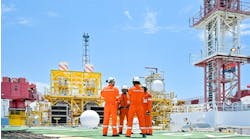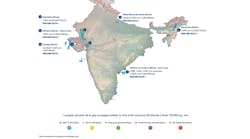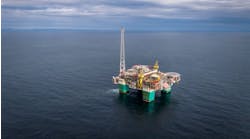The number of offshore assets reaching their end of life, globally, is rising, meaning decommissioning projects are a real eventuality for many operators. Decommissioning is an inherently hazardous exercise, one that requires meticulous planning, experienced management and an extremely defined skill-set, if it is to be executed safely.
The following are eight key considerations that should be included when embarking upon a decommissioning route map.
Establishing a decommissioning mindset. In some countries, decommissioning is still viewed as a ‘necessary evil.’ That is to say, it does not help to produce a revenue-generating asset, as a commissioning exercise would, so organizations often fail to dedicate the level of time, skills, and resources truly required. But there cannot be any temptation to cut corners, as this could put lives, the environment and the commercial integrity of the project at risk.
Assembling a competent project team. For one of the first times in the history of the decommissioning profession, there is a risk of demand outstripping supply – an issue now being felt on a global scale. The question of who is available to undertake the work is one of the largest challenges currently faced by the industry – especially when it comes to tackling offshore assets.
Great care and attention should be taken to assemble a competent supply chain including decommissioning expert and contractor, as well as offshore oil and gas specialists – nobody knows these assets more than the operator’s teams that have worked on them the asset during its entire lifespan.
Optimizing project logistics. Comprehensive planning lies at the heart of every successful decommissioning project, but the challenges are undeniably greater – especially from a logistics perspective – when working offshore. Getting people to and from a platform in itself is a hazardous process. Therefore, where possible, personnel movements should be planned so that return trips are minimized.
Add to this the physical constraints of getting large plant to an offshore location, and the job is harder still. There will inevitably be limitations regarding the equipment that can be used, so specialist knowledge is required to understand exactly what is possible, how this will affect the program of works (including timescales) and how to move forward with safety at the forefront of all decision-making.
Bringing assets to a ‘known state.’ If the asset has already been mothballed, this poses many potential difficulties. Offshore structures will also degrade much faster than a similar asset on an inland location, due to their exposure to the elements. This adds to the difficulties associated with establishing their ‘known state’ and understanding the potential pitfalls that lie ahead. When first arriving on site, it is imperative to assess the level of residual product, any loss of containment and the structural integrity of the remaining assets.
Respect the role of technology. Drones can often provide a helpful inspection aide both on- and offshore. They can be flown over an installation – and in some cases deep into specific structures – before people need enter any vessels or work at height themselves. The convenience and safety benefits associated with this clever use of technology should not be underestimated.
Varying regulatory frameworks. Demolition professionals undertaking assignments on an international scale will inevitably be presented with varying legislative standards. It could be argued that this makes it difficult to ensure compliance when faced with differing levels of regulatory stringency, but the stance on this should actually be obvious.
There should never be a safety scale, e.g. where the degree can be ranked as ‘very unsafe’, ‘unsafe’, ‘almost safe’, ‘quite safe’ and so on – safety is an absolute and non-negotiable standard. So, while criteria and attitudes may fluctuate from country to country, the baseline reference point should be best practice. Generally, this is driven by the legislation and codes adopted by EU nations.
Waste management and disposal. Decommissioning experts are now adept at delivering projects with ~100% material reuse and recycling rates, to the point where such high environmental standards are now becoming the norm. Consideration should be given to the waste management program for offshore works, especially because there is the added – yet manageable – challenge of transporting materials (including hazardous substances) back onshore.
Cost. The number of asset owners that favor a solely cost-led – rather than quality/cost-led approach to decommissioning – is thankfully dwindling. Supply chain selection criteria is now far more multifaceted than simply bottom-line impact. This is not to say that financial parameters will not be encountered, but if these parameters risk compromising EHS standards, work must stop immediately.



